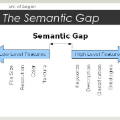Automated program verifiers are typically implemented using an intermediate verification language (IVL), such as Boogie or Why3. A verifier front-end translates the input program and specification into an IVL program, while the back-end generates proof obligations for the IVL program and employs an SMT solver to discharge them. Soundness of such verifiers therefore requires that the front-end translation faithfully captures the semantics of the input program and specification in the IVL program, and that the back-end reports success only if the IVL program is actually correct. For a verification tool to be trustworthy, these soundness conditions must be satisfied by its actual implementation, not just the program logic it uses. In this paper, we present a novel validation methodology that, given a formal semantics for the input language and IVL, provides formal soundness guarantees for front-end implementations. For each run of the verifier, we automatically generate a proof in Isabelle showing that the correctness of the produced IVL program implies the correctness of the input program. This proof can be checked independently from the verifier in Isabelle and can be combined with existing work on validating back-ends to obtain an end-to-end soundness result. Our methodology based on forward simulation employs several modularisation strategies to handle the large semantic gap between the input language and the IVL, as well as the intricacies of practical, optimised translations. We present our methodology for the widely-used Viper and Boogie languages. Our evaluation shows that it is effective in validating the translations performed by the existing Viper implementation.
翻译:暂无翻译



